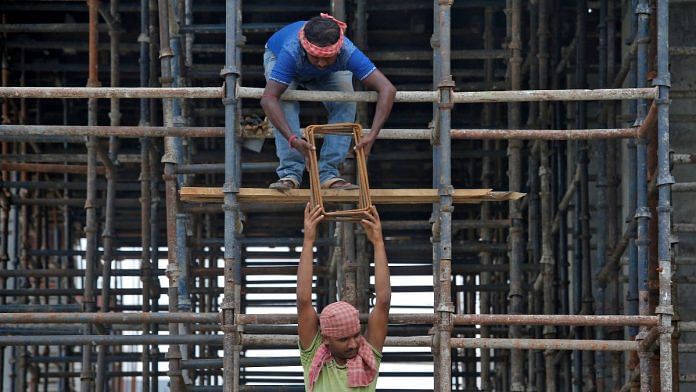The US, Japan, and South Korea are considered highly innovative countries, while India isn’t. But this is an incorrect assessment, for several reasons.
Over the years, there has been a considerable amount of discussion on India’s relatively low expenditure on research and development (R&D). Much of the discourse centres around the point that, if India were to spend more on R&D, its economy would be stronger and more self-sufficient. However, all this talk about R&D misses two key points, both of which are of critical importance to a country like India.
The first is that R&D is often conflated with innovation, which limits our measure of the latter. One can innovate without spending on R&D. It’s simply down to how you define innovation.
The second point is that the talk of R&D is limited to how capital is deployed, ignoring the labour side of an economy. Thus, countries like the US are lauded for Henry Ford’s assembly line technique of manufacturing cars, but Indian companies aren’t spoken of in these terms for coming up with 10-minute home-delivery services of nearly anything you could need.
The reason for this capital-labour imbalance in terms of R&D stems from the fact that the US, Japan, and South Korea, among the most prolifically innovative countries in the world, are short of labour.
Pretty much the only time the US had cheap labour was during the days of slavery. Japan and South Korea are both tiny nations with populations to match.
This shortage of labour meant that the cost of labour was often prohibitively high in these countries, and so companies had to figure out ways to get more output by using less labour, even if that meant using more capital. That philosophy has carried on even now, with automation of factories and other processes taking off.
Even inventions like ChatGPT are aimed at reducing the use of labour. The thinking is that it’s far more cost-efficient to invest in super-fast computers and vast server space than hire labour to do the same job.
The key point here is that, in these conventionally R&D-intensive countries, labour is expensive and capital is relatively cheaper. The opposite is true in India, which is why the whole debate on R&D needs to be recast to fit the realities here.
India is vastly labour-surplus. We will soon be the most populous country in the world, if we aren’t already there. As far as economic models go, ours caters to this reality. We have cheap labour, and so our processes depend on this factor of production far more than on capital. We would rather throw people at a problem than capital.
A road isn’t being built fast enough? Hire more workers. A software project needs to be done within a tight deadline? Hire more engineers. That kind of thing. Better this, it is felt, than spending on developing machines that will lay roads, or software that will do the job a human engineer would.
And this is as it should be, largely. Depend on resources you have in abundance.
Also read: Indian policymaking is good when cautious, botched when rushed. Learn from US banking crisis
The big Indian difference
So, then, the question is, if we have historically chosen labour over capital, why is there so much pressure to spend more on R&D in capital? In any case, as pointed out earlier, not spending on R&D doesn’t mean Indian companies are not innovating. Our innovations simply lie in how we deploy labour, rather than how we use capital.
It is nothing short of a remarkable innovation to have Swiggy Instamart, Blinkit, or any of the other apps deliver an order to your doorstep within 10 minutes of the order being placed. Warehouses aren’t the innovation here, although their strategic placement is certainly an improvement on older models. The innovation lies in creating a platform of delivery drivers and deploying them along short routes from the warehouse to the customer.
Similarly, there are apps that allow you to keep adding products to a virtual ‘cart’, all of which will be delivered outside your door early the next morning. No bell is rung, no call is made, no customer is woken up. They just have to open their door to find all their groceries. The innovation here is the agreement these apps have with housing societies that allow their delivery personnel to enter the society without the normal calls from the gate or app notifications.
Several Indian companies have also revolutionised the way we send stuff to one another, with many services now offering same-day intra-city courier services. Yet others have the delivery person visit a store of your choice to buy what you need, and then deliver it to you.
And what’s different here is that none of these innovations require investment in R&D. Investments in more warehouses and the tweaking of existing software, sure, but not in R&D, per se.
The entire gig economy in India–where you have cheap freelance lawyers, doctors, journalists, accountants–is an innovation in labour.
This is not to say that investment in conventional R&D is not important. It is. It’s the only way we will be able to improve on the capital we deploy–making it more energy-efficient, for one, and lowering our import dependence, for another.
Indeed, as this column has argued before, if we are to become a services powerhouse as is needed, we’ll have to speed up our labour-focussed innovations as well. The labour codes are an important development in this regard, and the Centre must lean on the states to implement them quickly.
But it is important to keep this talk about R&D within perspective. India is an innovative country. It just innovates in areas that make sense for it, rather than what fits the conventional capital-intensive models.
The author tweets @SharadRaghavan. Views are personal.
(Edited by Prashant)



